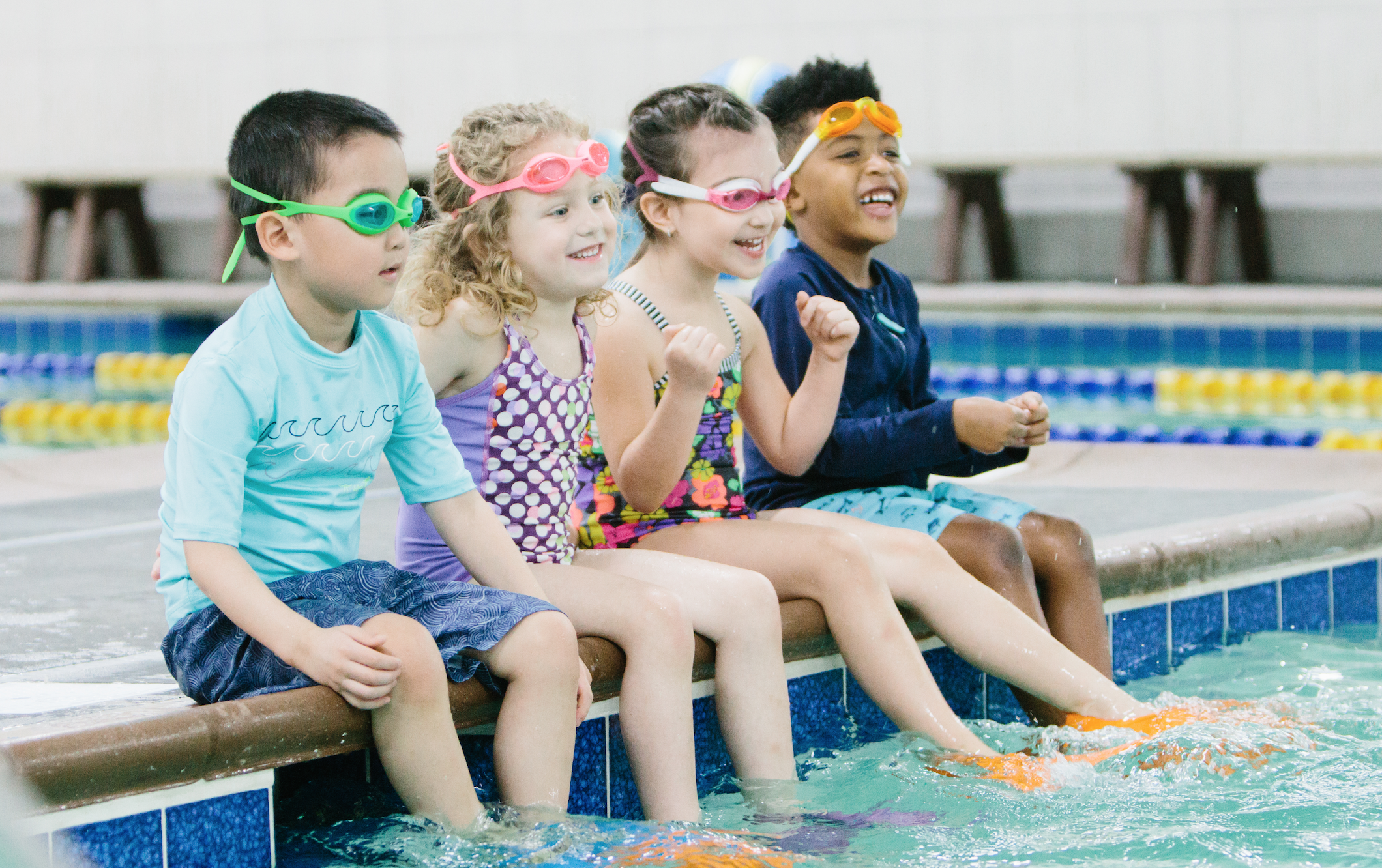Time is one of those rare things we all have in equal amounts, and how we choose to use it is one of our most important decisions. So when we designed the Foss Swim School curriculum, the length of the lessons was not an arbitrary choice.
It’s also a matter of understanding kids of all ages and how they learn. We’ve been teaching kids to swim for more than 27 years, and the observations of our co-founder Jon Foss and other instructors in those first few years established and then validated the model of 30-minute and 45-minute lessons (depending on age and level) we use today.
In a nutshell, we designed our classes to balance as effectively as possible several factors that, while they can vary from child to child, serve our students. These include:
- The attention span of kids at different ages
- Their stamina and strength
- How many skills can be taught in a single session
- How many times a person needs to repeat a skill to gain familiarity and mastery
- And maybe most importantly, where that fine line between “fun” and “work” lies
Our answer: 30-45 minutes for learning
We wouldn’t suggest that this is a magic number, but our experience has shown us that for most kids, 30 minutes is the optimal balance point where we can teach the skills needed in a single session once per week, where kids can retain and build upon what they learn, build strength and muscle memory, and still leave each class with a smile and without feeling fatigued, bored, or overwhelmed.
We extend to 45 minutes in later levels where the goal is to fine-tune form and build stamina, and where swimmers have the patience and physical ability to go longer.
Of course, every child is unique. That’s why our Swim Path approach is designed to give most kids the ability to progress at their own pace while still benefiting from the advantages of group lessons with swimmers of similar age and ability, while private lessons let kids with special circumstances take things slower or faster with tailored lesson plans.
What can you learn in 30 minutes in the pool?
In our Backfloat Baby and Learn to Swim programs, the 30-minute window allows us to go through six modules of five minutes each. Learning to swim is both a mental and physical exercise, so we need to make sure we don’t overwhelm students or overuse certain muscles. The modules will focus on specific skills or assemble a few skills into a bigger action such as combining kicks and arm motions into a stroke.
The key to learning, we have found, is not distance covered but repetitions. Our shorter pool lanes ensure each swimmer encounters the instructor multiple times per module, allowing for corrections and encouragement. Swimming longer tires swimmers out, and their form will suffer the longer they go. Letting kids swim long distances with poor form will only reinforce the poor form. Shorter spurts with more intensity creates a stronger foundation.
And of course, fun is the foundation for kids of all ages, but especially for younger kids. Each module is made into a game or activity that engages them. A chase game of cops and robbers is fun, and the kids motivate each other. It’s our way of getting students to work hard without thinking about it.
What about older swimmers?
For older kids, 30 minutes is still a good duration for a Learn to Swim class, though for different reasons. In kids 10 years and older, the issue is less about attention span and more about the extra effort it takes to learn a new skill at that age.
For older kids who have learned the core skills they need, we move into the Swim Stronger program. At this point, we incrementally increase class length to 45 or 60 minutes to gradually build stamina with longer modules and more distance. Even here, though, the goal is to make it fun and leave them wanting more. We may not play the same kinds of games, but teachers are still focused on engaging and finding that way to motivate students to work hard without it feeling like work.
At FOSS, swimmers who graduate from Swim Stronger can progress to Swim Faster, where we coach swimmers in the finer points of form and focus on speed – at this point, 75 minutes of pool time with an instructor is sufficient for class, while many of these swimmers work on building additional stamina and distance on their own.
Ultimately, at every level, our goal is to help kids stretch and grow in a way that is comfortable, fun, and still pushes them a little bit to work their hardest. When we see a kid get out of the pool breathing hard and with a big smile on their face, we know we’ve done our job – and so have they!
